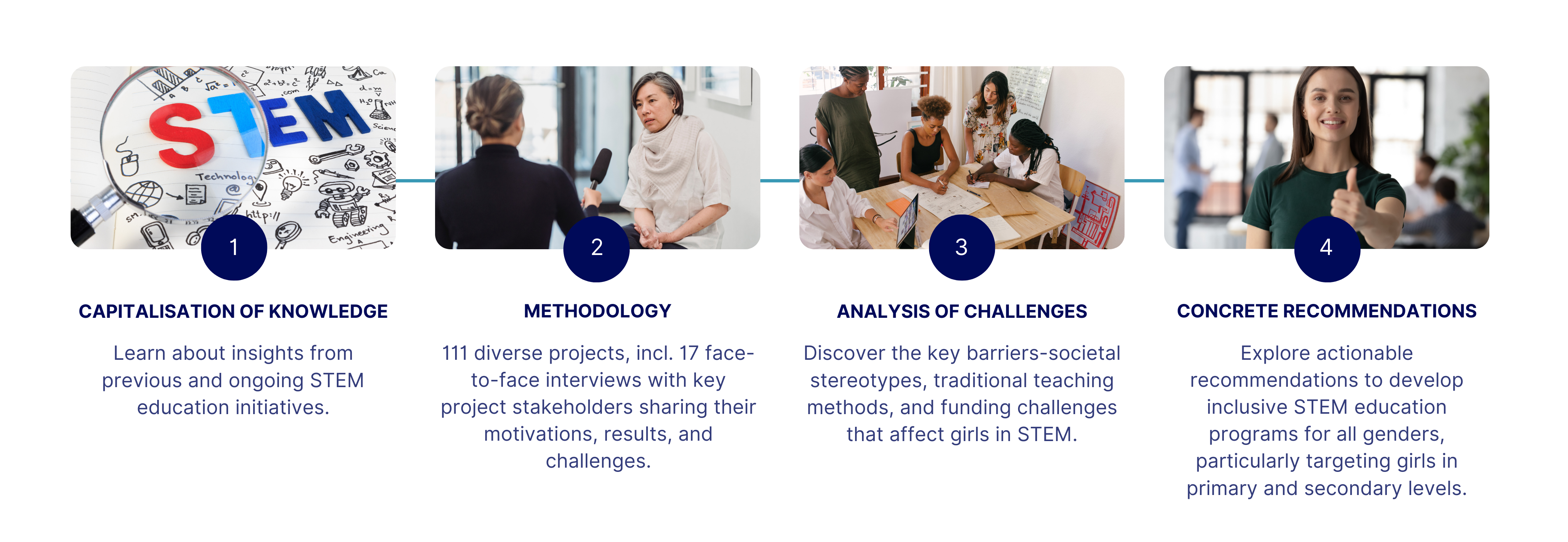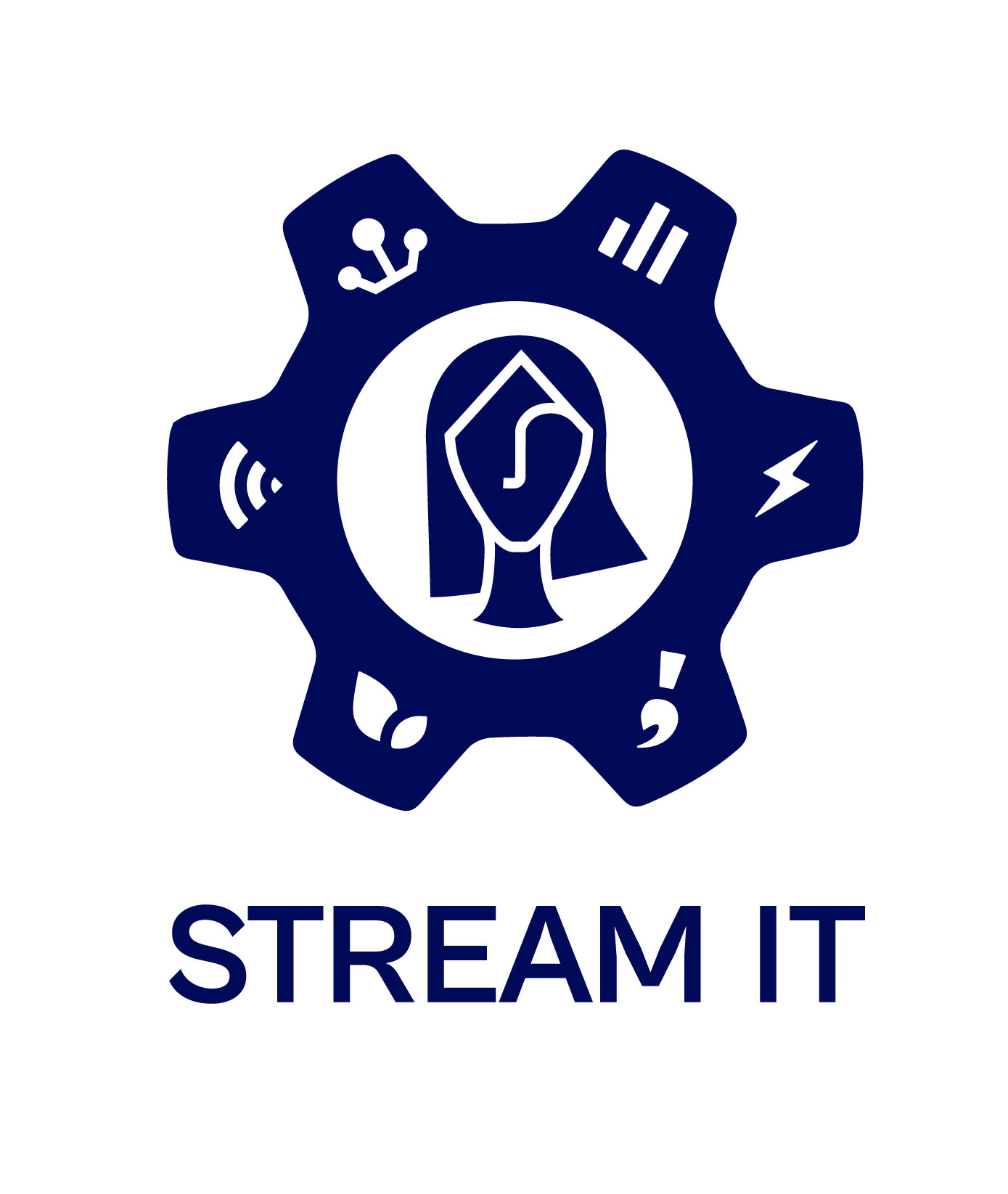In a world where innovation thrives on diversity, the underrepresentation of women and girls in STEM (Science, Technology, Engineering, and Mathematics) fields remains a critical issue. This report delves into the multifaceted intricacies of gender disparities in STEM education, aiming to identify and address the institutional and structural barriers that deter young girls from pursuing these vital careers. Focusing primarily on girls aged 14-18, our project seeks to cultivate an inclusive environment that supports skill development for all genders.
Through a combination of desk research, comprehensive project mapping, and insightful interviews with key stakeholders, we present a robust analysis of the gender-related challenges within STEM education. This report highlights our findings, particularly in four key areas: capitalisation on existing knowledge from previous initiatives, outlining our methodology with contributions from diverse projects, analysing the challenges faced by girls in STEM, and offering actionable recommendations for creating inclusive educational programs.
Our report D2.1 – Research report on previous and running initiatives and European projects on STEAM education and gender equality, elaborates on the following:

Capitalisation of Knowledge and Results: Task 2.1 involves capitalising on knowledge and results from previous and ongoing STEM education initiatives. This task includes conducting desk research and evaluating best practices to gather existing knowledge on gender equality and STEM education. The findings are compiled into fact sheets for public access. This report results from two subtasks under Task 2.1: mapping relevant projects and initiatives in STE(A)M and conducting interviews with experts. The report was completed by Mihajlo Pupin Institute (IMP) with seven additional partners. The methodology for T2.1 was structured to streamline the execution of subtasks, facilitating the identification of best practices – partners were asked to map relevant initiatives and identify key individuals for interviews.
Methodology: 111 diverse projects/initiatives were collected by the seven partners, targeting various groups, with a focus on girls/women. Additionally, 17 face-to-face interviews were conducted to gather qualitative data on selected projects, all of which were used for further data analysis. Interviews were conducted with representatives of the most relevant projects to present their motivation, results, challenges, and recommendations for improving the participation of women/girls in STEAM.
Analysis of Challenges: Identification of key barriers such as societal stereotypes, traditional teaching methodologies, and funding challenges, with specific emphasis on their impact on girls in STEM.
Recommendations: Concrete recommendations for developing inclusive STEM educational programmes, targeting both girls and all genders at primary and secondary levels based on conducted interviews conducted by STRE(A)M IT project partners.
The STREAM IT project serves as a crucial step towards achieving gender inclusivity in STEAM education. The insights and recommendations from this report aim to inform and inspire stakeholders at various levels to implement effective strategies that will empower girls and young women to pursue and succeed in STEAM careers. By addressing the persistent gender disparities and creating more inclusive educational environments, we can contribute to a more diverse and innovative workforce. The comprehensive analysis provided in this report underscores the importance of continuous and collaborative efforts to achieve gender equality in STEAM education. The recommendations offered serve as a roadmap for future initiatives, ensuring that all students, regardless of gender, have the opportunity to excel in STEAM disciplines.
In summary, while significant strides have been made in promoting gender inclusivity in STEAM education, ongoing efforts and innovative strategies are essential to sustain this progress. Future projects must continue to break down institutional and societal barriers, engage communities and parents, and provide tailored educational programs that inspire and support girls and young women in STEAM disciplines. Through collective efforts, we can achieve a more equitable and inclusive future in STEAM. The journey towards gender equality in STEAM is ongoing, and it is through persistent and innovative efforts that we will create a more inclusive and equitable future for all.
Read the full report for deeper understanding

